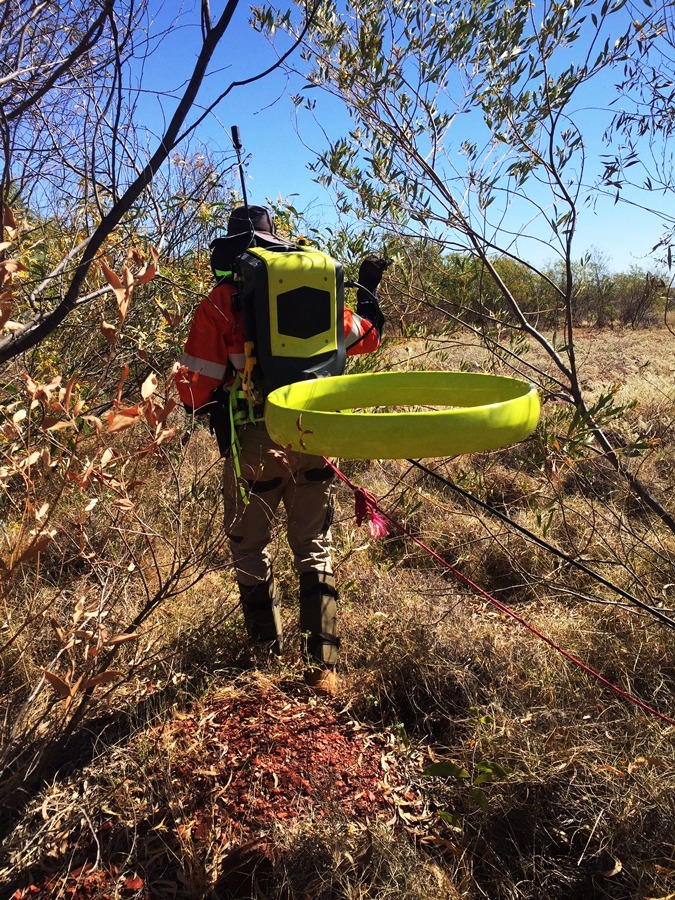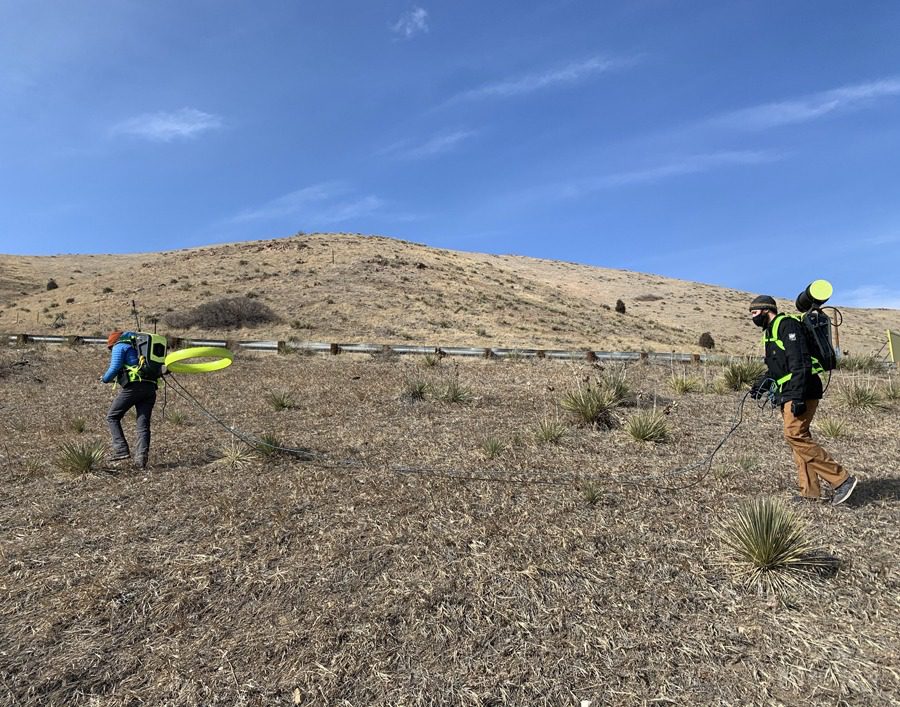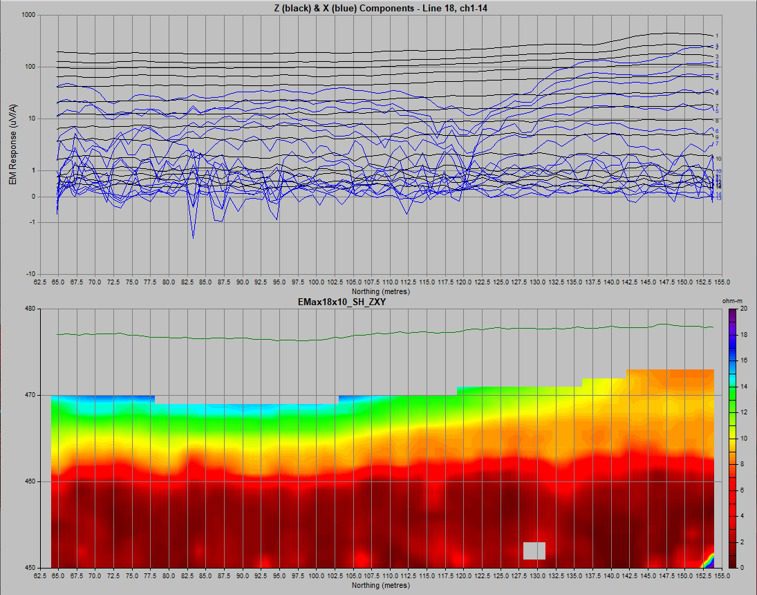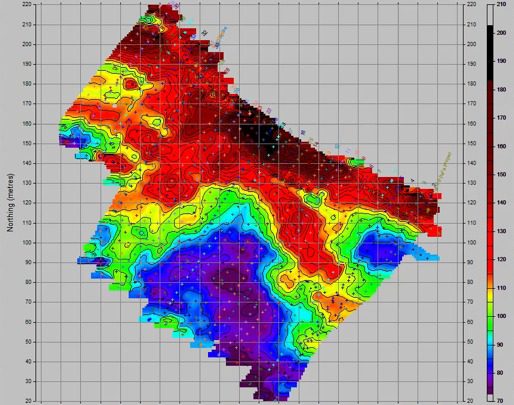Time-Domain Electromagnetics
The Time Domain Electromagnetic (TDEM) method is based on the induction of electrical currents in subsurface conductors by electromagnetic waves which are generated on the surface. A transmitter loop generates an EM wave that propagates into the subsurface. As the EM energy encounters different subsurface materials, eddy currents are induced, and secondary EM fields are generated. This secondary field is then recorded at the surface by a receiver loop. Depth of investigation can be tailored to specific target objectives by varying the size of the transmitter loop. Because of this, TDEM is suitable for a broad spectrum of projects, ranging from crustal-scale sounding (scale >10km) to deep water-resource work (>1km) to levee assessment work (>5 meters) to unexploded ordnance work (<1 meter). Near surface environmental applications include locating lateral discontinuities such as landfill boundaries, changes in soil composition, or in the search for buried metallic (ferrous or non-ferrous) objects such utilities, underground storage tanks, or buried rebar-reinforced concrete structures.

Applicable On:
Rock
Soil
Paved Surfaces
Test For:
Buried Metal
Mapping Geologic Structures (i.e. Vertical Fractures)



Structural, Pavement, & Tunnel Methods
Foundation Depth & Integrity Methods
Geophysical Methods
Seismic
Electrical Resistivity
Electromagnetics
Ground Penetrating Radar
